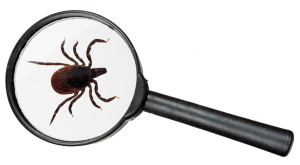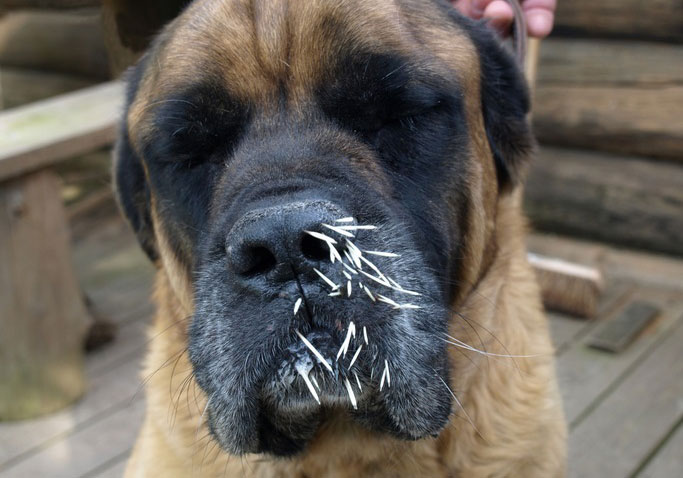Tick Talk and Lyme Disease
 Whaaaat? Ticks?! Lyme Disease?!
Whaaaat? Ticks?! Lyme Disease?!
My “owner” says not to panic, although ticks are slowly becoming more prevalent in Edmonton and surrounding areas, not all species of ticks carry Lyme disease, and Lyme disease is rare in our region. I still get to do all the fun stuff like go to the dog park and run around in the brush, my owner makes sure I am protected from these uuugly little critters! My “owner” has put together some more information on the subject, please see below…
Ticks are small insects in the arachnid family that burrow part way into the skin, bite, draw blood, and then drop off. The feeding tick’s mouth will be under the skin, but the back parts will be sticking out. They will be full of blood and blue-grey in colour. This is called an engorged tick (HealthLink BC 2011). Ticks are common in mountainous and southern areas of North America, and can potentially transmit Lyme disease. Ticks are slowly becoming more prevalent in Edmonton and surrounding areas. Ticks usually hide in long grass, under leaves, and other foliage debris. Pets (and people) who frequent these locations (e.g. dog parks, wooded areas, mountain trails) are more prone to coming into contact with ticks. Ensure to check dogs and yourselves thoroughly for ticks after an outing to such an area.
Lyme disease is caused by a microscopic spirochete called Borrelia burgdorferi that can be transmitted through tick bites. It usually takes several weeks to months to start to show clinical signs of soreness/lameness, fever, and very rarely kidney damage. Ticks attach for blood meals for 3-5 days, but it takes a MINIMUM of 48 hours of tick attachment for the Lyme disease organism to transmit from tick to dog (Brooks 2010). If the tick can be removed within 48 hours of attachment, the pet will not get Lyme disease. Note that not all species of ticks carry Lyme disease, and Lyme disease is uncommon in this region (Bubbie Foster 2013).
To remove an attached tick, use tweezers or gloved fingers to grasp the tick as close to the pet’s skin as possible. Pull it away from the skin slowly without twisting. Monitor the area closely and give us a call if it looks red or infected. If the tick’s mouthparts/head is still in the pet, the animal’s body will push out the left behind pieces as if it was a foreign body (like a sliver).
Preventative medicine is the best way to avoid issues related with ticks, the most common being topical tick control products obtained through your veterinarian. In addition, Lyme disease vaccines are an available alternative. If there is any concern that a pet has Lyme disease, the treatment is very effective, simple, and cost effective.
The Alberta government is conducting a tick surveillance program which will identify the species of tick and determine if it is a species known to carry Lyme disease. If you find a tick on your pet, place it in an empty pill vial or zip lock bag with a small piece of damp tissue and and bring it in to the clinic, we will send it in for testing.
Of course, if there is any concern regarding Lyme disease or removal of a tick, give us a call and we will be happy to assist you and your pet.
Dr. Travis Foster (D.V.M.)
References: Brooks, W.C. (2010). Lyme Disease. Veterinary Partner. Retrieved July 3, 2013 from http://www.veterinarypartner.com/Content.plx?P=A&S=0&C=0&A=1588
Foster, Bubbie. (2013). Tick Talk and Lyme Disease. Bubbie’s Tips. Straight from the Dog’s mouth August 11, 2013.
HealthLink BC. September 2011. Tick Bites and Disease. Retrieved July 28 2013 from http://www.healthlinkbc.ca/healthfiles/hfile01.stm
Recommended Posts

Porcupine Quills in Dogs … Oh My!
July 09, 2017

Obesity in Pets
January 11, 2017

Senior Pets – Ways to Help Fido in His Later Years
June 08, 2016

